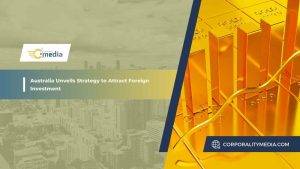Aussies have just scored their first decent pay rise in nearly three years, with wages ticking up higher than the annual inflation rate for the first time since 2021. The latest data from the Australian Bureau of Statistics (ABS) reveals that the Wage Price Index (WPI) climbed by 4.2% in the 12 months up to December, slightly edging past the consumer price index, which sat at 4.1%.
This is a notable shift, as it’s the first time since March 2021 that yearly wage growth has outpaced inflation, marking the most significant annual jump in wages in nearly 14 years.
Michelle Marquardt, the head honcho of prices statistics at ABS, attributes the wage growth in both the public and private sectors to comprehensive annual wage and salary reviews. Interestingly, the December quarter of 2023 saw a more substantial contribution from jobs covered by enterprise agreements compared to your typical December quarters.
The public sector saw a standout increase, with wages rising by 1.5% from September, thanks to fresh pay deals for essential workers, particularly those in healthcare, like our hardworking nurses. The surge in the public sector was largely due to the introduction of enterprise agreements for essential workers in healthcare, social assistance, education, and training, following changes to state-based wage policies.
The annual wage growth for the December quarter, at 4.2%, showed an uptick compared to the September quarter (4.1%), representing the highest recorded annual growth since the March quarter of 2009, which also sat at 4.2%. The healthcare and social assistance industry experienced the most significant wage increases, reaching 5.5%—the highest growth since the start of ABS data collection in September 1998. On the flip side, the finance and insurance sector saw the lowest wage growth among all industries, at 3.2%.
The positive momentum in Aussie wage growth continued into the final quarter of 2023, surpassing the Reserve Bank’s forecasted peak. The Wage Price Index recorded a 4.2% increase in the fourth quarter compared to the same period in the previous year, slightly exceeding economists’ expectations. This quarterly growth of 0.9% aligns with estimates, indicating that policymakers will keep a close eye on these developments as they evaluate economic price pressures.












More Stories
Australia Unveils Strategy to Attract Foreign Investment
FCC Imposes $200 Million Fine on Major US Mobile Carriers for Unauthorized Sale of Customer Location Data
Rent.com.au Reports Record Revenue as RentPay Platform Hits $250 Million Milestone